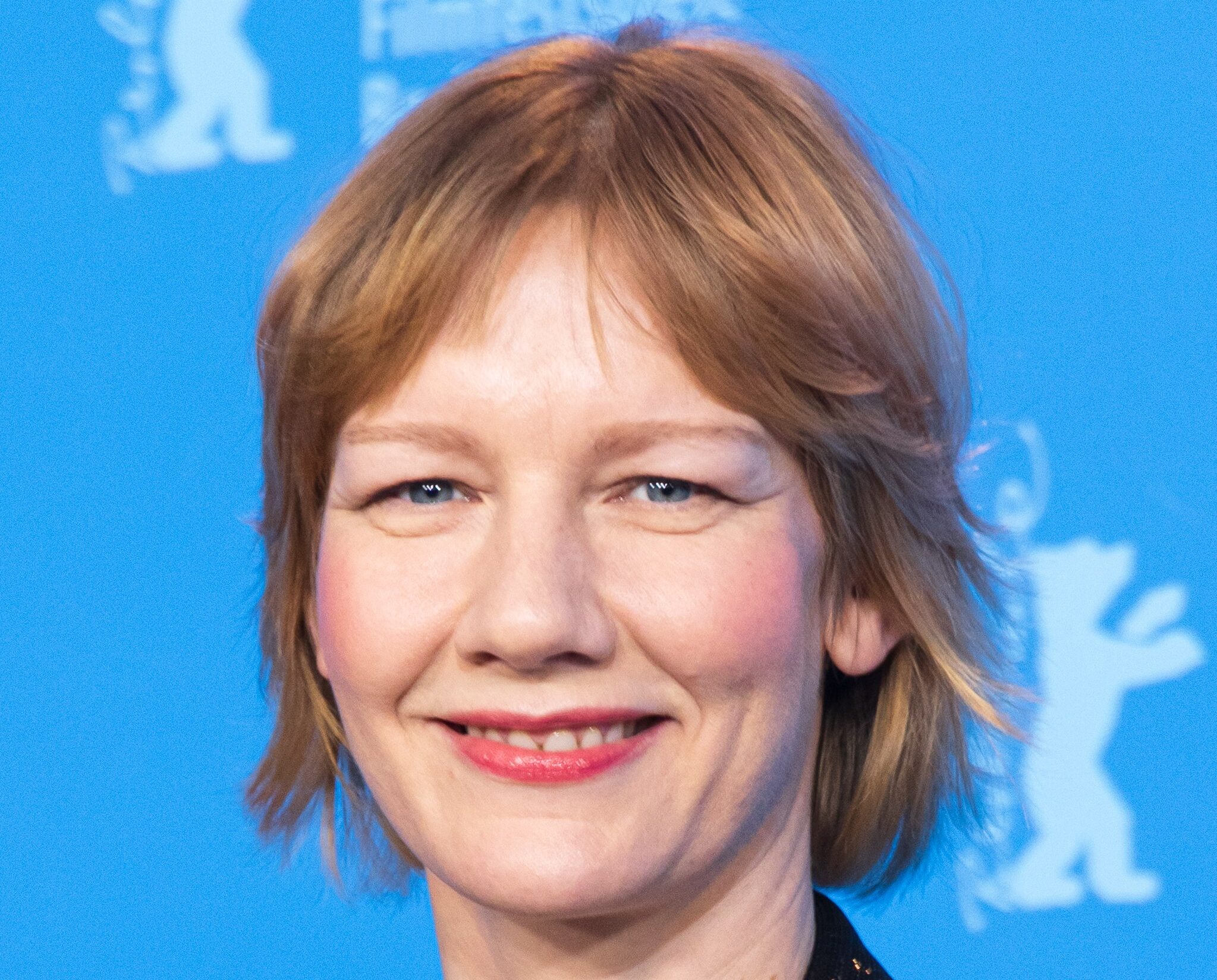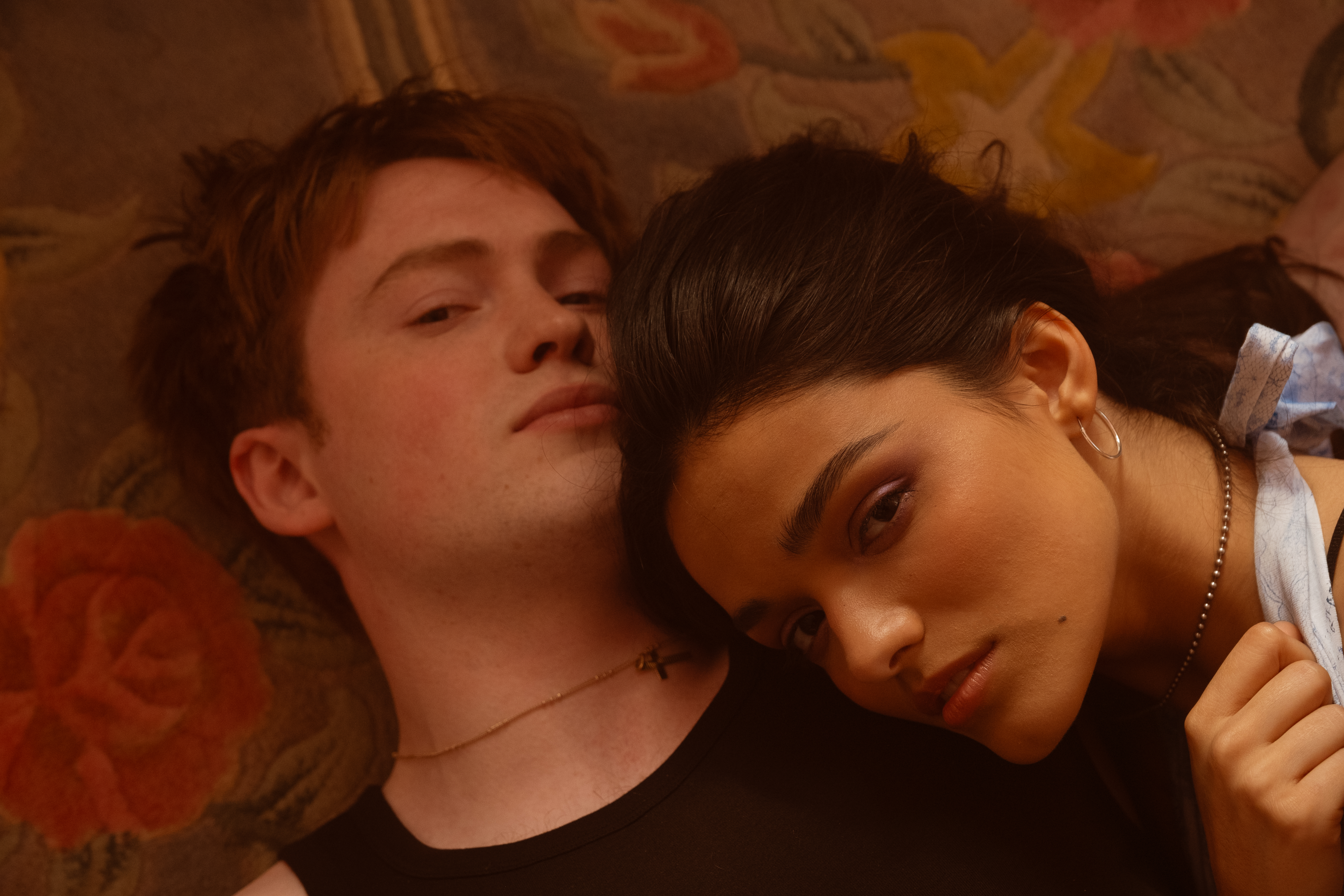Agamemnon

(Photo © Richard Termine)
There’s a moment in the Aquila Theatre Company production of Aeschylus’s Agamemnon that’s marked by some ear-shattering noises offstage (thanks to composer-sound designer Anthony Cochrane’s synthesizer). The sounds represent Clytemnestra slaughter of her eponymous hubby — who, in a no-win situation, sacrificed their daughter Iphigenia to the gods when he needed a stiff wind to get him to Troy, where his brother’s wife Helen had been taken and war has broken out. As the revenge-thirsty queen goes about her bloody business, bearded Argos elders who are hanging around in fedoras and double-breasted overcoats wonder whether they should enter the palace and take matters into their own hands. “We must have a plan of action,” one of them says. Another replies, “Yes, I agree, we must have a plan.”
Hearing this, anyone looking for relevance to the current world situation in Aeschylus’s approximately 2,500-year-old play might think of the questionable wisdom of America’s charging into Iraq with no strategy for stabilizing the Saddam-ized country after the war was (ostensibly) won. Since the adaptation used by Aquila was first created in 1998 by P.W. Meineck, who also co-directed this production with Robert Richmond, the lines quoted above almost certainly weren’t intended as references to Iraq — but they are very likely to be heard that way now. (Meineck is Aquila’s producing artistic director.)
At any rate, the motivating interest behind this Agamemnon doesn’t seem to be Aeschylus’s ability to speak directly to a 21st-century audience — other than, of course, the seminal dramatist’s presentation of timeless human behavior in a larger-than-life manner, which is why the play remains eternally cogent. Evidence suggests that Meineck and Richmond want to be true to the traditions that Aeschylus established when he burst onto the Greek scene and introduced innovations that propelled drama to new plateaus.
Apparently, Aeschylus was the first to use stage machinery; in this staging, a watchman (Louis Butelli) hangs high over the stage in a metal contraption as the action starts. He’s not a deus ex machina helping to wrap things up; he’s an hominus ex machina helping to start things off. Meineck and Richmond also include choreography in the dancing forms of three women of Argos (Gillian Claire Chadsey, Toni Melaas, Magin Schantz) who register as embodiments of the fates; Aeschylus set that precedent, too. And there is also some emphatically stylized movement when the slaying of Iphigenia is demonstrated during the production’s opening recapitulation of the curse that was placed on the House of Atreus.
In their determination to do it the Greek way, the co-directors have succeeded at being earnest, respectful, and workmanlike — but they haven’t reached the point where the awe that Aeschylus wanted to inspire in audiences is actually inspired. They hit their target best in Miriam Laube’s performance as Cassandra, who’s brought back to the damned Atreus house as a prisoner of war and who, as she has done throughout the conflict, sees what’s in store for Agamemnon and herself. Clad in a white shift (costumes by Theoni. V. Aldredge), Laube is a cat on a hot marble roof; indeed, so nervous is this Cassandra about what she might blurt out that she holds her hand in front of her mouth until she is forced to speak. Cassandra is a woman suffering from the shakes, and Laube definitely gives the shivers to today’s anxiety-versed crowd — just as she would undoubtedly have wowed first-nighters in 458 B.C.
Olympia Dukakis and Louis Zorich might not have had the same effect on the ancients. In the dolorous but slight action that consists simply of Agamemnon’s returning home to a fateful reception from the wife whom he hasn’t seen in 10 years, both Dukakis as the cheating wife and Zorich as the weary warrior take a pass on the larger-than-life acting option; rather, their performances are just about life-size, which isn’t usually what’s wanted in Aeschylus. Dukakis’s reserve in her early scenes might be considered appropriate for someone addressing her elders and later deceitfully receiving her long-absent husband. That reticence gives Dukakis somewhere to go later when she literally lets her hair down, but she doesn’t go there — at least, not all the way. In pastel Grecian garb, she’s outraged but not outrageous; i.e., her fury is curiously contained. (No such claim could have been made against Zoe Wanamaker when she unleashed her Electra upon New York audiences a few seasons back.)

in Agamemnon
(Photo © Richard Termine)
Zorich, in what looks like a Civil War general’s get-up, also underplays more than is desirable in Greek tragedy. He’s larger than life to the extent that Meineck and Richmond have positioned him on a Jeep for his initial speeches; therefore he towers over the milling elders. Otherwise, his taciturn demeanor, while fitting for a man who’s worn out after a decade-long campaign, lacks the required dimension.
Other distractions further mar the charged proceedings. The elders — Nicholas Kepros (the only beardless one), David Adkins, Louis Butelli, Matthew Lewis, Thomas Schall, John Sierros, Alex Webb — have the relatively static job of commenting on what has happened and what is happening for the audience’s edification. (As they declaim their individual lines, most of them are inclined to point an accusatory finger at the others.) And while Gillian Claire Chadsey, Toni Melaas, and Magin Schantz appear to have trained as dancers, their synchronized movements lack a disturbing sinuousness from which the drama would benefit. On the plus side, Marco Barricelli is solid as Aegisthus, Agamemnon’s first cousin and the man who replaces the returning hero in Clytemnestra’s affections.
The set for the Aquila Agamemnon, which the busy Meineck-Richmond team also designed, is stunning. Against a scrim featuring blue-white stones that look like a theater arena floor, a free-standing, gilded doorway stands majestically. There’s a wide and high runway before it. Aside from the contraption in which the watchman descends and the jeep in which the victorious Agamemnon enters, there are no other furnishings. None are needed, as the stage is filled. Would that the realization of the play itself were equally satisfactory. Perhaps that will happen when the Aquila powers tackle the rest of the Oresteia trilogy — The Libation Bearers and The Eumenides — next season.
(Note: For anyone who caught Howard Davies’s just-closed production of Eugene O’Neill’s Mourning Becomes Electra in London, Aquila’s entirely presentable Agamemnon may serve as an antidote. Intending to update the Oresteia, O’Neill — at his pretentious, tendentious worst — transplanted Aeschylus to the post-Civil War American northeast and turned the House of Atreus into the House of Atrocious. Davies, Helen Mirren, and an at-sea ensemble didn’t do much to ameliorate the assault.)












